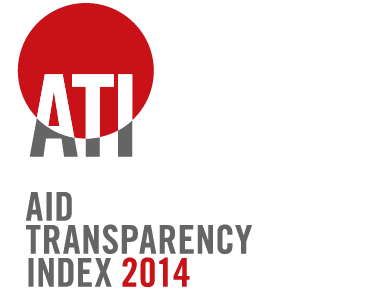Performance across indicators
Commitment
The three indicators in this group measure the overall commitment of organisations to make their aid more transparent. They assess the quality of the organisation’s FOI legislation or disclosure policy; the level of ambition shown in their plans to implement IATI; and the accessibility and usefulness of information presented in their data portals or project databases. As in 2013, Cyprus is the only organisation to not score at all for commitment to transparency. Luxembourg and UN OCHA do not score on FOI/disclosure policies. Among the multilaterals, the EIB and UNDP provide clarifications on exceptions to their disclosure policies, specifically listing the interests that would be harmed by disclosure of such information and subjecting these exceptions to public interest overrides. The AsDB, AfDB and IFC have appeals processes that are more independent compared to others.
Of the 68 organisations assessed, 26 are yet to publish an implementation schedule detailing specific timelines and delivery targets for publishing to the IATI Standard. The levels of ambition in the schedules published vary greatly. Project databases also vary widely in their accessibility and usability. For example, only 13 of the 68 organisations have publicly accessible databases that include activity-level data that is available for bulk export in machine-readable formats and published under an open licence; meaning that information can be accessed easily and used freely by anyone for all purposes, including commercial purposes. See box 4 below for more on data portals and features that enhance the usability of the information.
Publication – organisation level
The eight indicators in this group measure the extent to which organisations publish planning and financial information relating to their organisation as a whole. On average, organisation-level information is more consistently published than activity-level information. Organisation strategy, procurement policy, allocation policy and annual report are the indicators that are most consistently published (more than 60 out of 68 donors publish this information). Just four organisations – DFID, GAVI, IADB and World Bank IDA – score 100% for organisation planning information and nine others score more than 90%. China is the only organisation that does not score at all for publishing organisation planning information.
As in 2013, financial information is less likely to be published than planning documents, with only five organisations – the AsDB, AfDB, Canada, GAVI and UNDP – scoring 100% for this sub-group of indicators. There are 28 donors, including agencies in major providers such as France, Germany, Italy, Japan, Norway and the U.S., that do not consistently publish forward-looking total organisation budgets and budgets for recipient countries.
Publication – activity level
The 28 indicators in this group measure the extent to which organisations publish information on their development projects. As in previous years, the results show that organisations are still not publishing activity-level information consistently. Only six organisations – DFID, GAVI, the Global Fund, MCC, UNDP and World Bank IDA – score over 80% for activity-level information. On average, organisations score 35% for these indicators in 2014, six points higher than in 2013. Although this could be viewed as an impressive increase, most of the new information published is basic, such as project titles, descriptions, overall cost, sector, contact details and tenders; and there has been an overall increase in the average scores for activity basic and classifications information, including for organisations placed in the poor category. There are still several organisations that do not publish this information consistently enough to score however.
The publication of added-value fields such as results, conditions, sub-national location and project documents remains poor. Information on the performance of individual activities (results, conditions, impact appraisals) is the least consistently published, with 44 organisations not scoring for any of these indicators. There are 10 organisations, including Brazil, the German Foreign Office and the UK Ministry of Defence, which do not publish any project documents consistently for their current activities. Only 26 organisations publish information on the sub-national location of projects and seven publish the budget identifier, which aims to link aid information to recipient country budgets.
Format of publication
For the 22 indicators where scoring is graduated on the basis of format, there have been some improvements since 2013. The results show that 46% of the information for these indicators is published in machine-readable formats, of which 38% is published to IATI. In 2013, 37% of the information was available in machine-readable formats, of which 28% was published to IATI. There has also been a marginal increase in the amount of information published by organisations in web format. Some notable organisations still publish no machine-readable data at all, including France MINEFI, Germany AA and Japan MOFA.
Top five performers by indicator sub-groups
| Commitment |
Publication – Organisation |
Publication – Activity |
|||||
| Planning | Financial | Basic information | Classifi-cations | Related documents | Financial | Performance | |
| Sweden | DFID | AfDB | GAVI | GAVI | World Bank IDA | DFID | MCC |
| FPI | GAVI | AsDB | MCC | UNDP | Global Fund | MCC | IADB |
| DFID | IADB | Canada | UNDP | UNICEF | GAVI | GAVI | Global Fund |
| DG DEVCO | World Bank IDA | GAVI | DFID | FPI | IADB | UNDP | DFID |
| DG Enlargement | UNDP | UNDP | Global Fund | Nether-lands | MCC | Sweden | AsDB |
